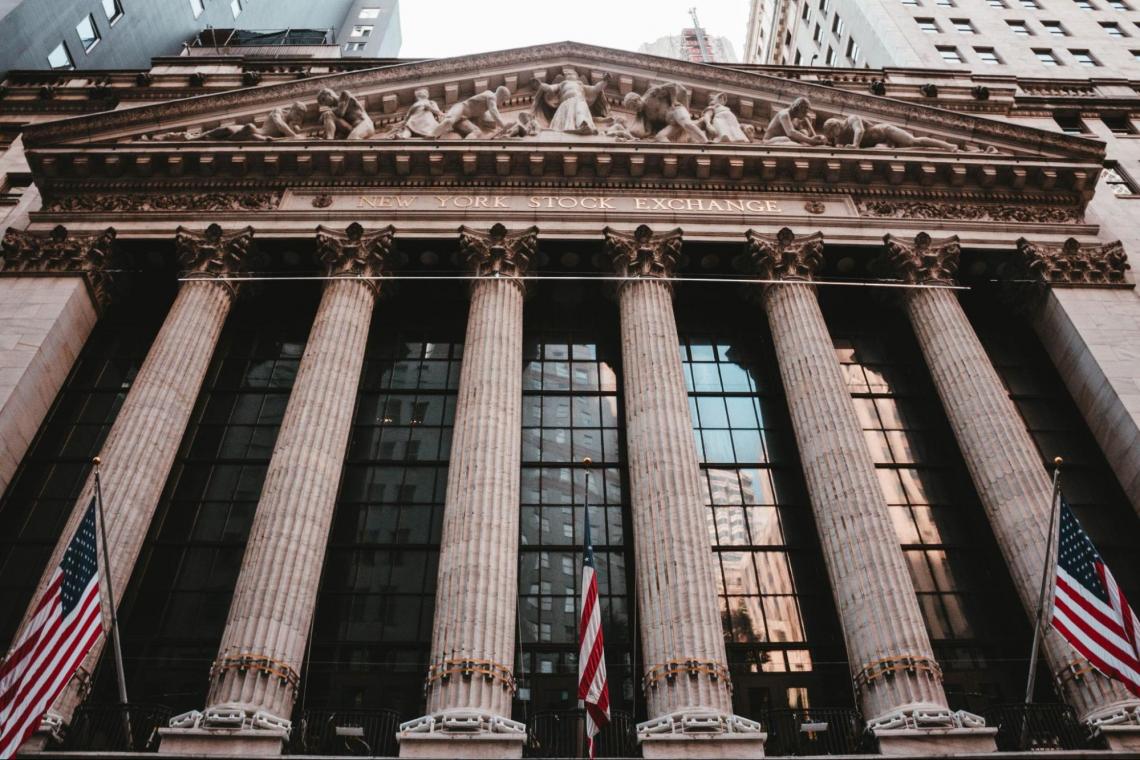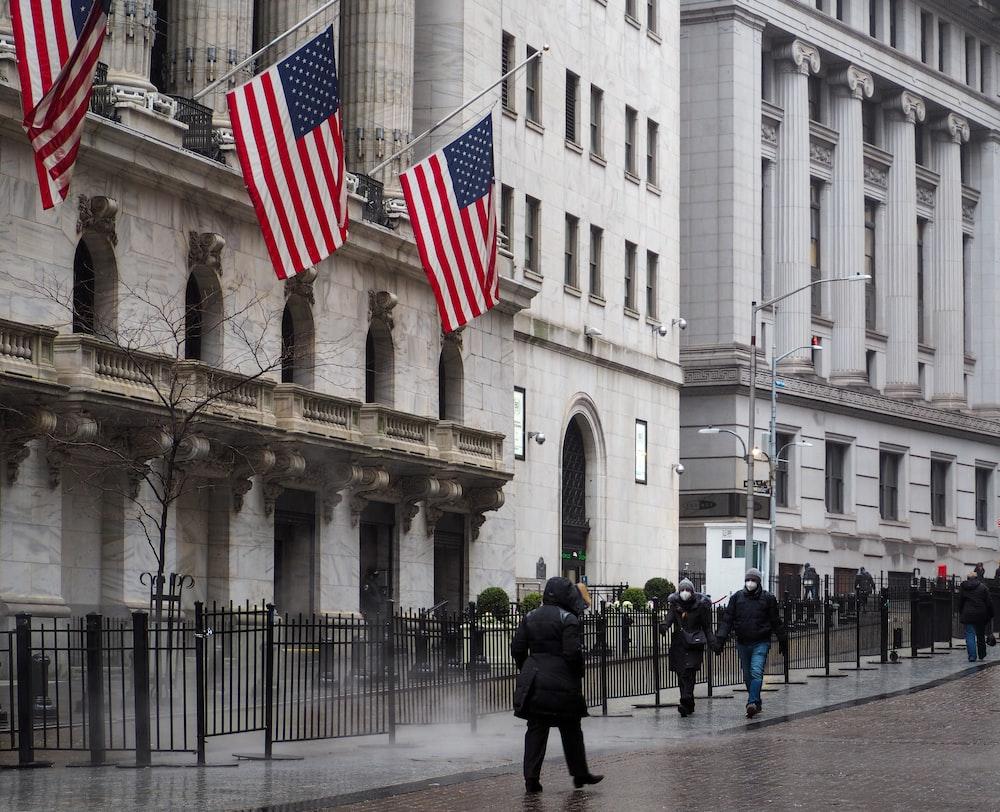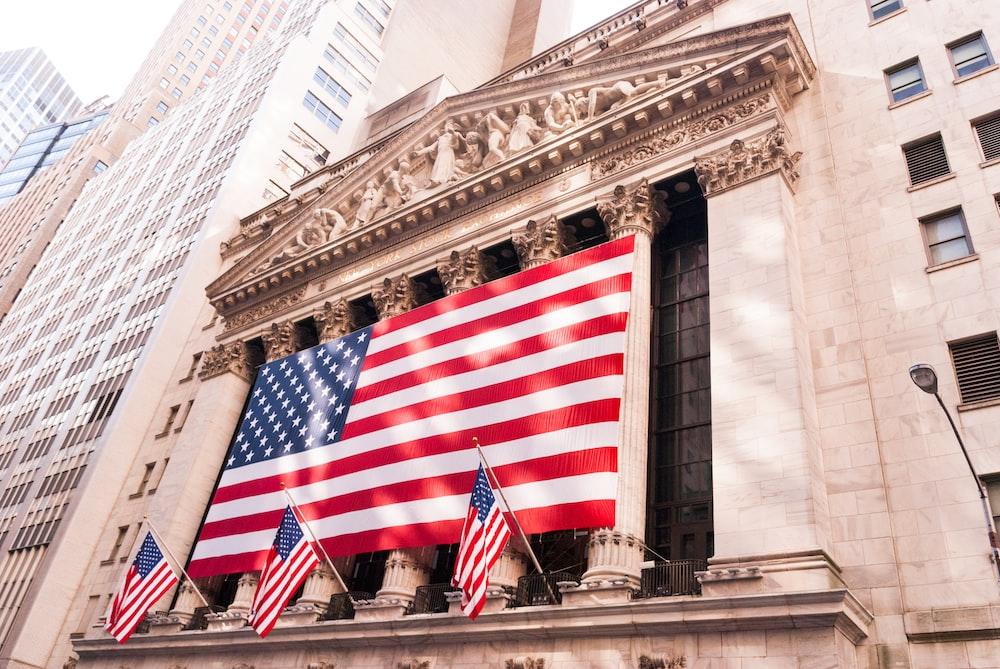American Stock Exchange (AMEX)
Its name came from a buttonwood tree where the earliest transactions between NYC brokers occurred because the agreement was signed right under the tree.
The Buttonwood Agreement in 1792, signed between 24 stockbrokers at Wall Street, is an essential piece of the Amex's (American Stock Exchange) history.

Its name came from a buttonwood tree where the earliest transactions between NYC brokers occurred because the agreement was signed right under the tree.
There are two parts of the agreement: the first was that the brokers were supposed to deal only with each other, eliminating the auctioneers; the second was that the commissions were to be 0.25%.
The Buttonwood agreement states that "we (...) solemnly promise and pledge ourselves to each other, that we will not buy or sell from this day for any person whatsoever, any kind of Public Stock, at a less rate than one quarter percent Commission on the Specie value and that we will give preference to each other in our Negotiations."
The 24 brokers who signed this agreement were known as the founding and subsequent fathers of the Buttonwood Agreement, the founding document of the New York Stock Exchange, and for its creation of the trust system.
History: From Curb Market to NYSE American Stock Exchange
Curb brokers or curbstone brokers are brokers who trade on curbs of a financial district, a ubiquitous feature in the 1900s.

The most famous curb market is in the financial district of Manhattan, where curbstone brokers traded speculative stocks and stocks in industrial companies such as iron and chemicals.
Emanuel S. Mendels and H. Pforzheimer were one of the leading curb brokers in the 20th century who organized and standardized the curb markets to create a system in which brokers and dealers traded with each other on the curbside of the streets near the stock exchange.
Mendels established the New York Curb Market Agency in 1908, which made training rules for curbstone brokers. He also became the 'proctor' in the 20th century who would decide on quotation lists.

He put effort into eliminating fraudulent stocks and brokers and published the first annual directory of reliable brokers in 1904.
In 1911, Mendels and a group of brokers and advisors founded the New York Curb Market Association, considered the first formal constitution of the American Stock Exchange.
From 1929 to 1953, the New York Curb Exchange was established and was named NYSE Amex Equities in 2009 when NYSE Euronext, the parent company of the New York Stock Exchange, acquired it.
Eventually, the New York Curb Exchange organization was established in 1929 and operated until 1953, when it was renamed Amex. In 2009, the name changed to NYSE Amex Equities after being acquired by NYSE Euronext, the New York Stock Exchange parent company.
Examples of Products Traded on NYSE Amex
To help better understand the specific services provided at this stock exchange, here are two examples of the primary products traded on NYSE Amex.

1. Exchange-traded funds (ETFs)
An exchange-traded fund, or ETF, is a type of investment fund traded on stock exchanges.
ETFs are traded from owner to owner throughout the day on stock exchanges, whereas a similar product, mutual funds, are exchanged from the issuer based on the price at the end of the day.
Most ETFs are index funds, meaning they track a basket of investments such as the S&P 500 index or the Dow Jones Industrial Average. This way, they will achieve lower market impact costs.
An Exchange Traded Product (ETP) divides ownership into shares, and the shareholders hold shares of profits in the form of interest or dividends. Its advantages include lower costs, tax efficiency, and higher possibilities of trade.
While ETFs have many advantages, such as lower costs, the downside is a low trading volume (typically fewer than 10,000 shares a day) as they follow small-cap firms and lack liquidity due to such lower trading volume.
2. Small-cap stocks
For the companies listed on Amex, please refer to this page. The companies listed here vary in industries, are relatively small in market size, and are seen as having growth potential.
There are, for instance, Camber Energy, iShares US Treasury Bond ETF, SPDR Bloomberg, Timber Pharmaceuticals, etc.
NYSE American Listing Requirements
The NYSE Amex listing requirements are known to be less strict, as it is designed for smaller companies and offers them a greater choice in how they trade. There are seven criteria for the first standard category and three criteria for the second standard category.

The first standard category consists of pre-tax income, market cap, total assets and total revenue, the market value of public float, stockholders' equity, minimum price, and operating history.
Five different types of standards must be met with some but not all of the seven criteria. This offers a more flexible listing choice.
The second standard category comprises public shareholders, public float, and daily trading volume. A company has three options; each must be met with some or all of the three criteria, making the listing easier.
For example, a company that has a market value of $3m, a pre-tax income of $750,000, stockholder equity of $4M, a minimum price of $3, more than 800 public shareholders, and more than 500,000 public float, is qualified to be listed on NYSE Amex.
NYSE American vs. other Equity Exchanges
To further understand how NYSE American operates and what services it provides, it is good to know how this stock exchange is different from other stock changes under the same parent company.

1. NYSE
Established over 225 years, it is the global leader in market quality and the world's most trusted equities exchange.
It is the only exchange with a unique market model Designated Market Maker (DMM), that combines human judgment and technology to provide the best markets for listed companies and investors.
The model operates this way to facilitate price discovery during market openings, closings, and substantial reading imbalances or instability. Its current owner is Intercontinental Exchange (ICE).
2. NYSE American
It is designed for growing companies and is competitively priced. It derives the DMM model from NYSE with quoting obligations for each NYSE American-listed company, with NYSE Arca's fully electronic price/ time priority execution model.
It is ranked second for market share and liquidity among all major exchanges, and the most time quoted at best prices, the largest quoted size at best prices, and the narrow set quoted spread.

3. NYSE Arca Equities
It is the first all-electronic exchange in the US, meaning it does not have a physical exchange place. It currently lists more than 1,800 exchange-listed securities in addition to exchanges. It is #1 in the listing and trading of all ETPs.
It was formed from the 2006 merger of NYSE and Archipelago (Arca).
4. NYSE National (NSX)
Formerly known as National Stock Exchange, it was acquired by NYSE in 2017 and is now a fully electronic market that combines the high performance of NYSE Pillar technology with a "taker/maker" fee schedule.
It is the first stock exchange in the US that transformed into 100% electronic trading.
NYSE Pillar is an integrated trading tech platform that connects each member firm to all NYSE equities and options markets using a standard protocol to improve efficiency and reduce customer trading complexity.

5. NYSE Chicago (CHX)
Founded in Chicago, Illinois, in 1882, it was formerly known as the Chicago Stock Exchange. It was then acquired by Intercontinental Exchange in 2018 and rebranded as NYSE Chicago in 2019.
It has a CHX Matching System that is entirely electronic. As a result, publicly traded companies do not have to be listed on CHX for trading. Instead, CHX allows trading stocks on other exchanges.
CHX SNAP, or Sub-second Non-displayed Auction Process, is its auction product that facilitates the bulk trading of securities and minimizes information advantages enjoyed by only a few market participants.
- NYSE American or NYSE Amex can be traced back to the Buttonwood Agreement in the late 16th century that established trading exclusivity within the curbside brokers and set commission rates.
- The primary financial products traded on NYSE Amex include ETFs and small-cap stocks.
- The listing requirement of NYSE Amex is known to be less stringent because it aims at smaller firms and offers those firms a greater choice and higher flexibility on the listing.
- Even though the exchanges listed above are under the same parent company, it is important for business owners looking to list their companies to consult experts, research different NYSE stock exchanges, and choose the one that fits the most.
Researched and authored by Amy Liu | Linkedin
Free Resources
To continue learning and advancing your career, check out these additional helpful WSO resources:









or Want to Sign up with your social account?